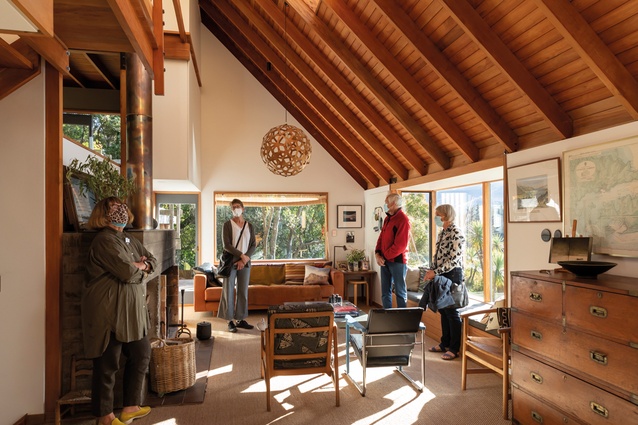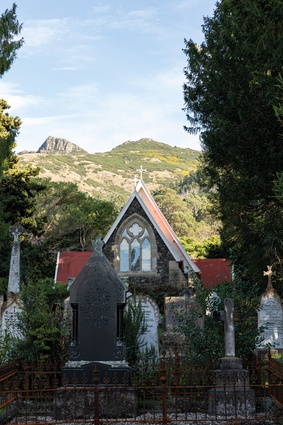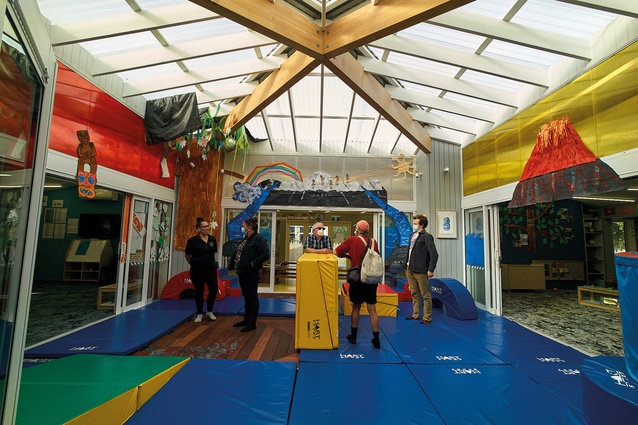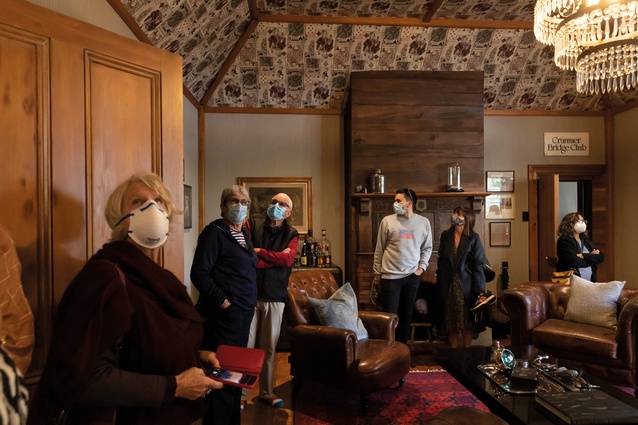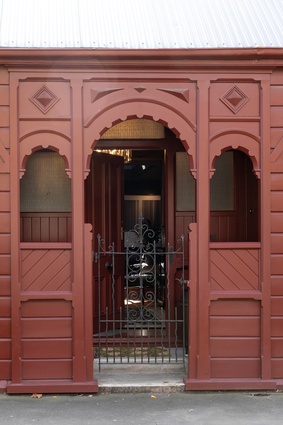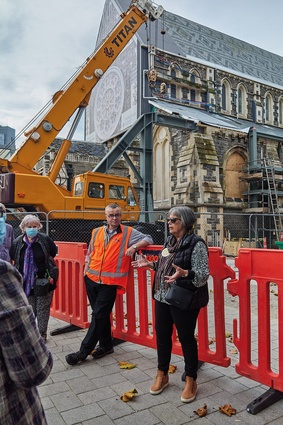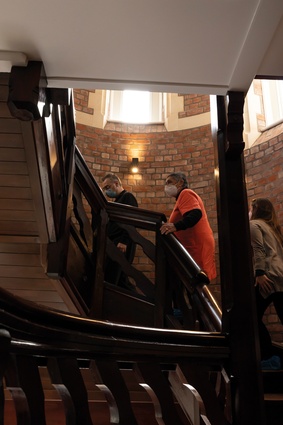Open Christchurch in review
Architect Abigail Hurst enjoyed Open Christchurch – Te Pūtahi Centre for Architecture and City Making’s skilfully curated opening of 41 buildings, 23 activities and four guided walks – over the weekend of 30 April and 1 May 2022.
A four-year-old sits next to an organist in St Peter’s in Upper Riccarton, Ōtautahi Christchurch, and is invited to play on one of the South Island’s only two regal organs. A past occupant of the former Addington Gaol brings his family to the cell that he once occupied. At the Redcliffs Village Library, a retired gentleman whispers to the expert speaker that he used to be an architect, too. These moments of social (and cultural) connection are what Open Christchurch, a celebration and invitation to visit the city’s most exceptional architecture, is all about. While the festival is in only its second year, judging by its enthusiastic attendance and talk of the next one, it has already secured its place in the hearts of Cantabrians.
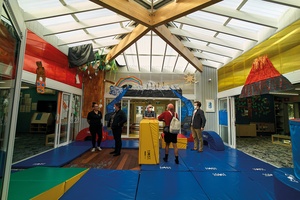
Te Pūtahi, Centre for Architecture and City Making, skilfully facilitated the opening of 41 buildings, 23 activities and four guided walks to the public over the weekend of 30 April and 1 May 2022. Selected by suggestions put forward by the public and Te Pūtahi’s own building council, the buildings open to the public are aimed to include different sites every year, and to provide a wide cross-section of Christchurch’s architecture. Other criteria are that they display design excellence and contribute to Ōtautahi’s identity and history. Input from Joseph Hullen, Trustee at Matapopore Charitable Trust,1 also enables programming that reflects manawhenua’s values. This year’s offerings varied in style from Gothic Revival buildings, such as Benjamin Mountfort’s Great Hall in The Arts Centre, through to the most recently completed project – Kohinga St Albans Community Centre, utilising modern timber technology. A range of scales was included, the smallest being Brooklands Lagoon Public Toilet, along with a geographical spread of locations from Belfast to Burwood to Governors Bay. Functionally, the buildings were also of a stunning variety – Harewood Crematorium, the Hine-Pāka Bus Interchange and Te Hohepa Kōhanga Reo (Early Childhood Education centre) all wowing visitors with their mastery of form and space, designed skilfully for their intended purposes.
Pleasingly, the wide variety of buildings available to visit was met by an equally diverse crowd. Amongst the usual suspects of architects and those already architecturally inclined, many were there because of personal connections to the sites. Others were just ready to get out and explore their neighbourhoods. With clear blue skies and pent-up desire for an event – after so many have been cancelled for pandemic-related reasons over the past few years – queues of eager faces could be seen lining up outside almost all of the 13 buildings I visited over the course of two days. While there was only approximately half of last year’s turnout (an estimated 8400 attendances), Dr Jessica Halliday explains that this was to be expected, given the uncertainty and restrictions placed on numbers for more of the locations. She considers the event a huge success; navigating a weekend-long city-wide event in a pandemic is no small achievement in and of itself. Halliday says there was a huge advantage in the event model – having a festival already dispersed so thousands can attend because they are in different places at different times. It meant they were able to adapt the event nimbly to the Covid-19 Protection Framework’s orange traffic light setting with just three weeks’ notice.
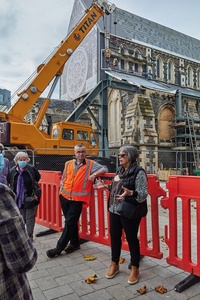
This change in traffic light setting also made a tour of the Christ Church Cathedral possible. For the first time in over a decade, the public was allowed past the barricades to see the Cathedral, and I joined others, including parishioners that once worshipped here, for a tour of the site. Architectural historian Jenny May not only gave a succinct-yet-comprehensive overview of the history of the Christ Church Cathedral and the phases of stabilisation, strengthening and reinstatement being undertaken in the $100+ million project, but also told the everyday stories of the site. We heard about the black cat that has assumed its home inside, the sacred objects found and yet to be found, and the dirty decontamination work – rat carcasses, generations of pigeon droppings, mould and all. This informative and personal insight allowed us to feel a connection to a place typically inaccessible.
The insights continued in personal memories and snippets generously given at private residences. The Rout House, designed by Jonty Rout in 1979 for his family, was a walk through a light-filled, multilayered volume, tree-house-esque with its display of internal timbers and uninterrupted views on the edge of Governors Bay. The house is delightful architecturally, but also captivating were the stories given of a young family growing up. On the edge of Cranmer Square, the Hurst Seager House (altered by Samuel Hurst Seager in 1899) has a surprisingly significant history. The tour guide tells us that it is the first example of a New Zealand architect intentionally referencing another – the front porch flanked arches and diamond reliefs, directly referencing Benjamin Mountfort’s Christchurch Club of 1859, earning a Heritage Category 1 status. The building has been home to the Cranmer Bridge Club for almost 50 years and the most recent building owners have honoured the original playing room with deck-of-card illustrations on the ceiling. The MegaTower by Thom Craig Architect, 2016, is a small but very vertical jaunty volume, located on a former public toilet site. Looking to the street from the pop-out balcony, stepping back and seeing personal objects scattered amongst professional ones in the cunningly devised floor plan, I am granted an insight to a workday in this small-scale tower, quelling the curiosity I’ve often felt as an observer from the bustling street below.
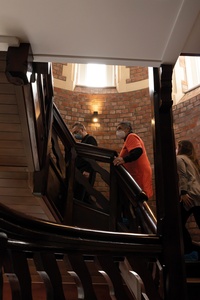
The people I met, experts and volunteers alike, that hosted these venues kindled a spirit of generosity through the giving of these rare opportunities, their time, expertise and energy. No digital experience is quite like walking up the restored timber spiral steps of the Observatory Tower in The Arts Centre Te Matatiki Toi Ora, one of Mountfort’s later works, completed in 1896, and now masterfully restored. There is a plan for the Townsend Teece Telescope to be housed here again and operational later this year, while much of the remainder of the building has been leased to a freshly opened boutique hotel, tastefully fitted out with a curated New Zealand art collection, library bar and individually designed guest room interiors. The only ones disappointed were the many who missed out on a tour but the good news is that there is bound to be a next time.
In the multifariousness of the architecture on offer over the weekend, a common thread unites them. Each is a considered response to site, climate, and brief – an architect given the opportunity by willing clients to perform this task, who has done it well. Ōtautahi Christchurch’s quake-ravaged urban fabric is still disparate but some of its architecture – pre- and post-quake alike – is just brilliant. Good design does not have one answer. Open Christchurch demonstrates this, allowing different buildings to inspire and be enjoyed by anyone willing to walk through an open door.
1 The Matapopore Charitable Trust was established by Te Ngāi Tūāhuriri Rūnanga for the provision of cultural advice on Ngāi Tūāhuriri/ Ngāi Tahu values, narratives and aspirations for projects associated with the regeneration of Ōtautahi

